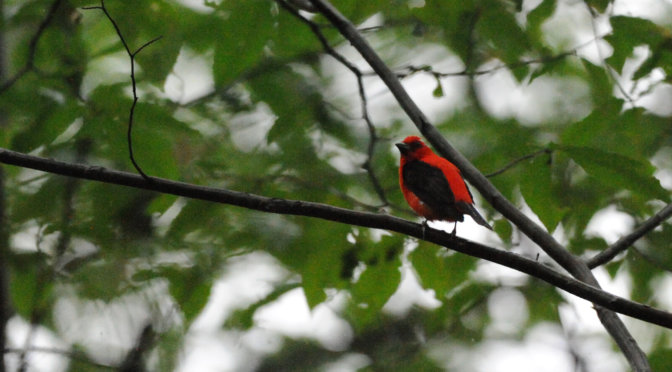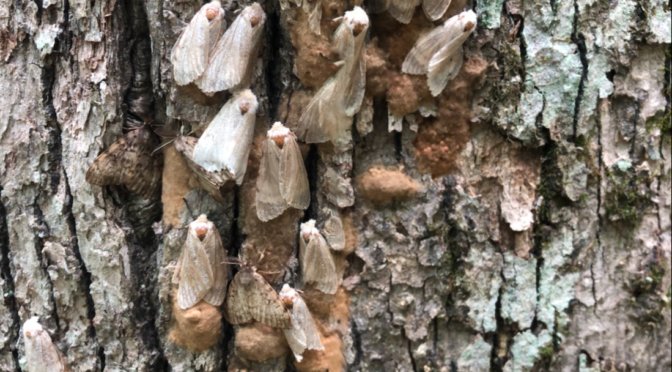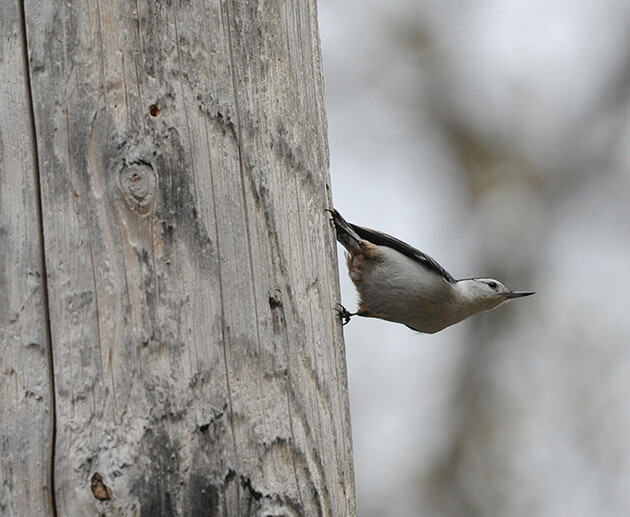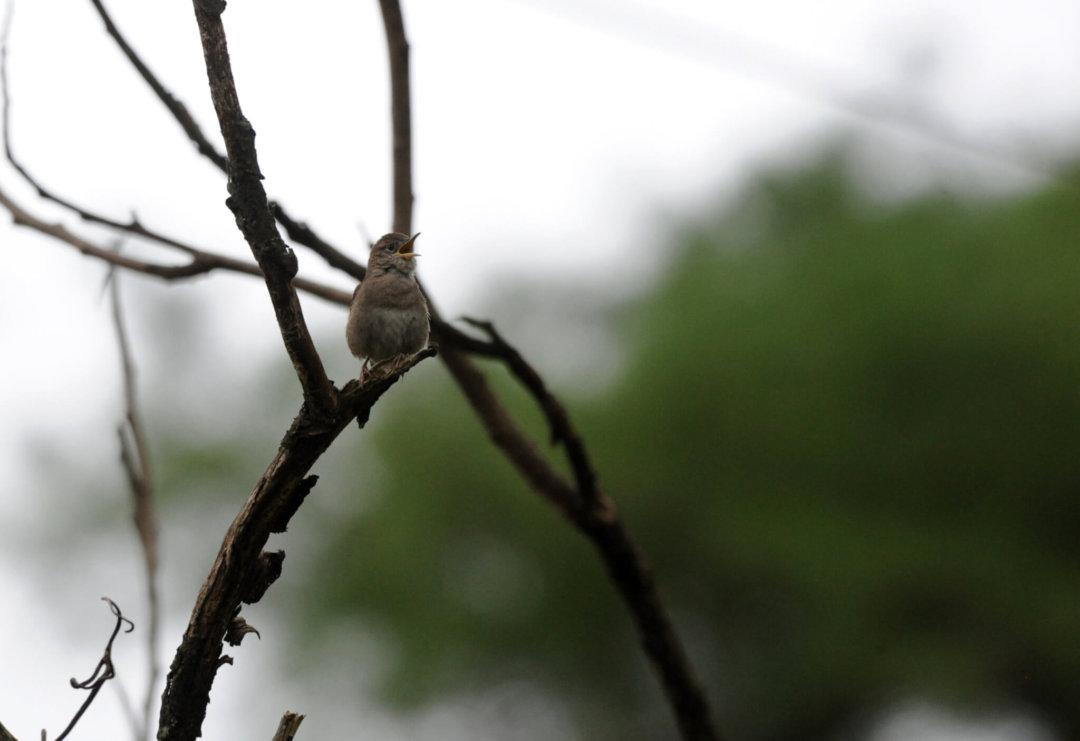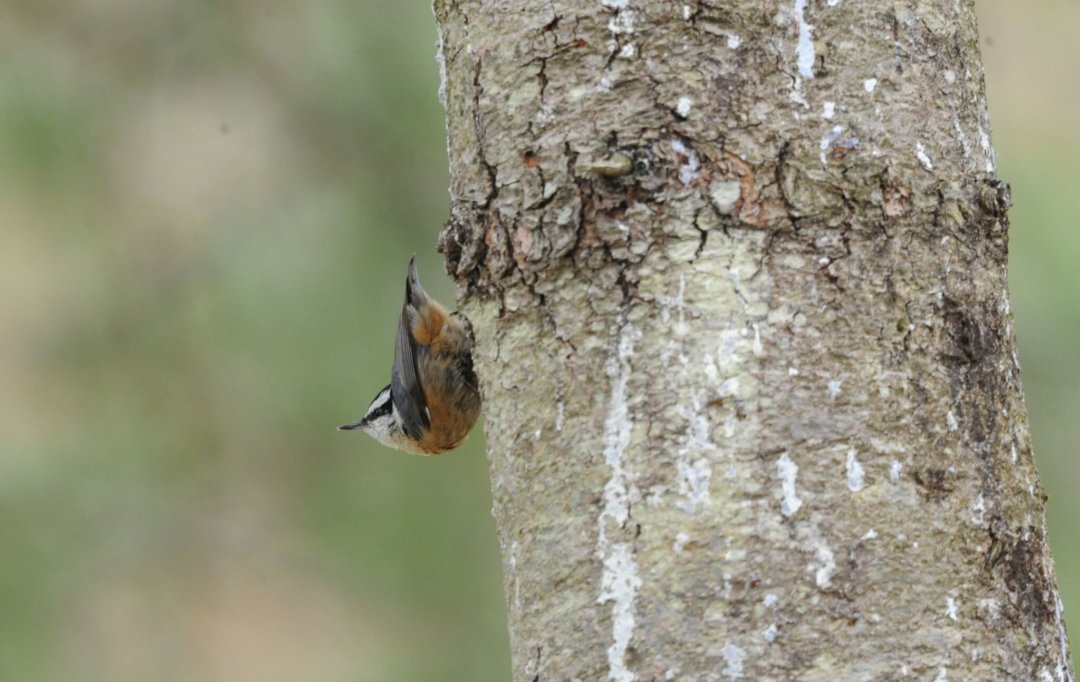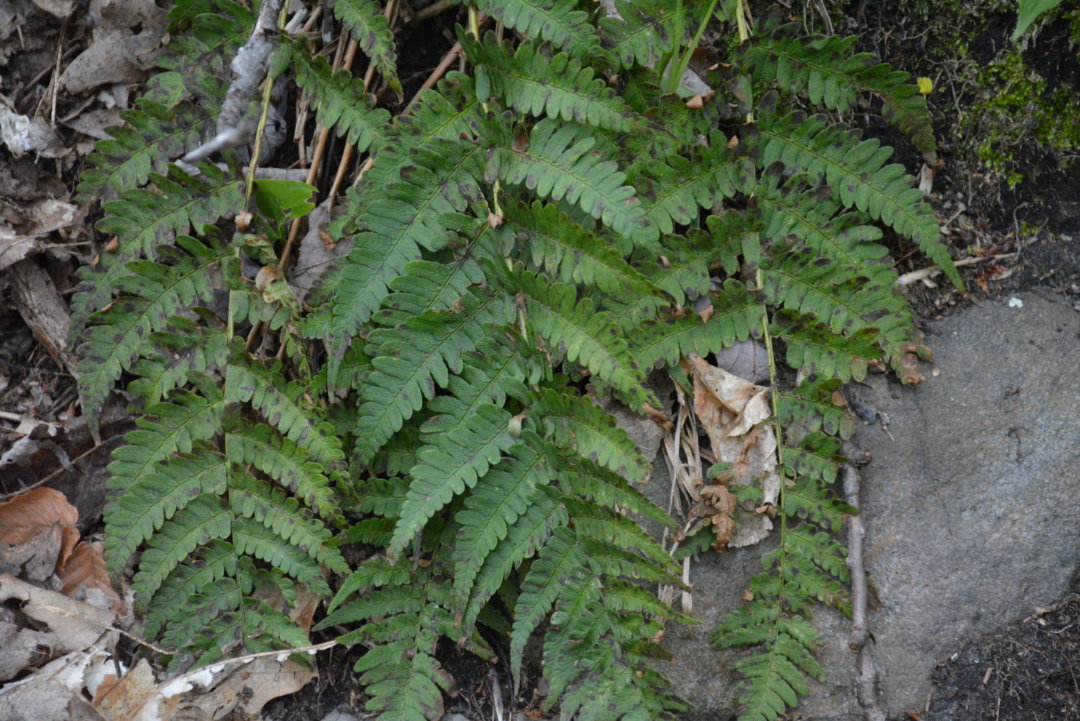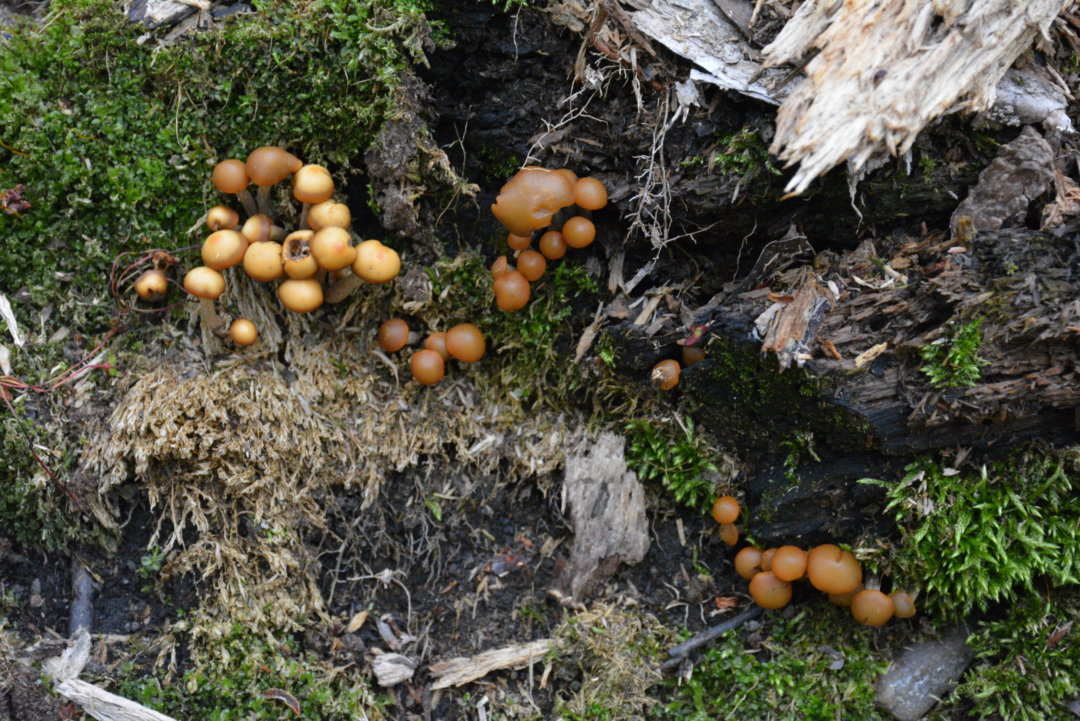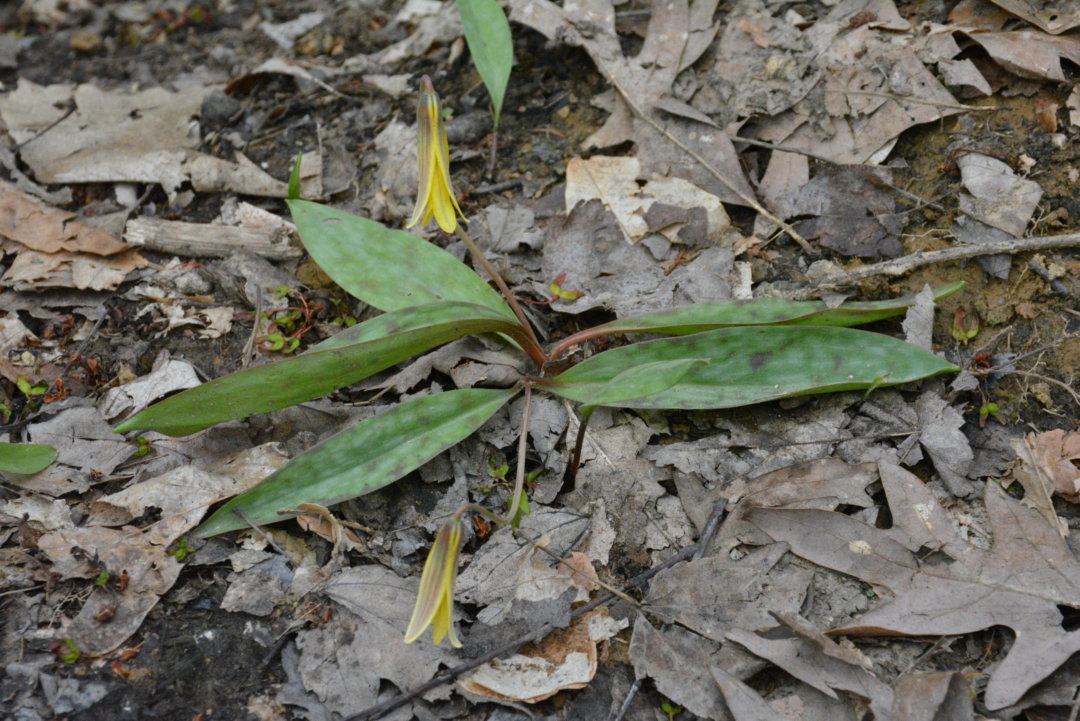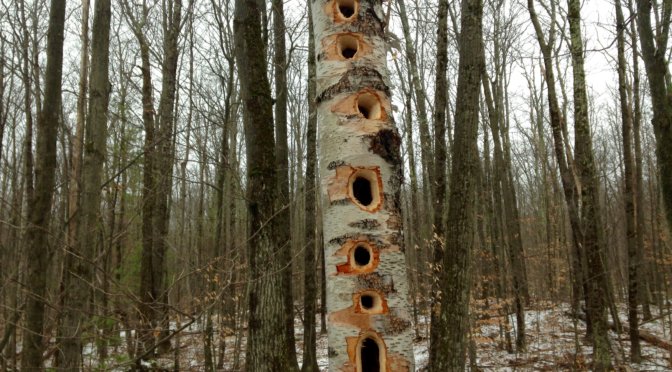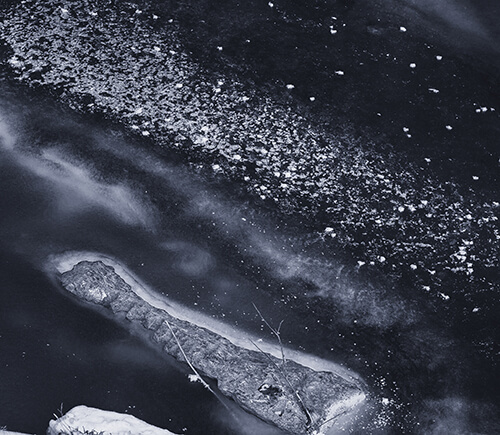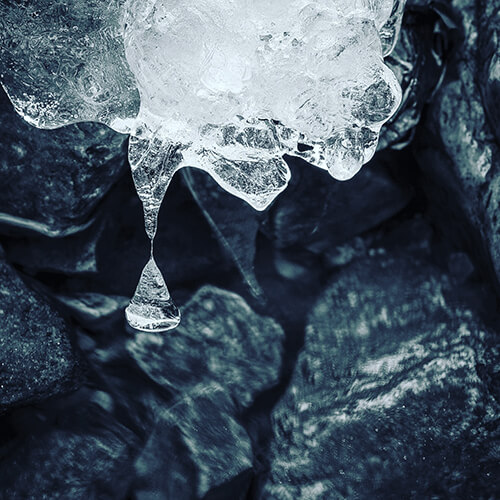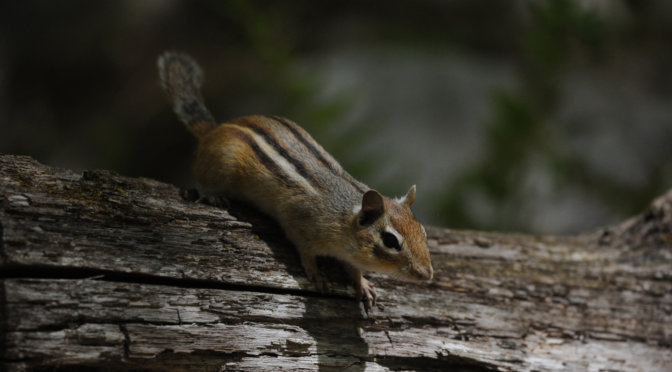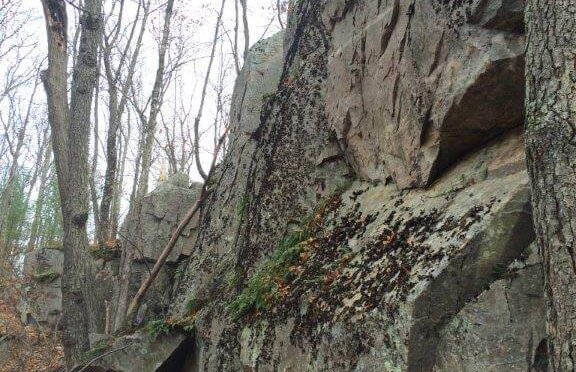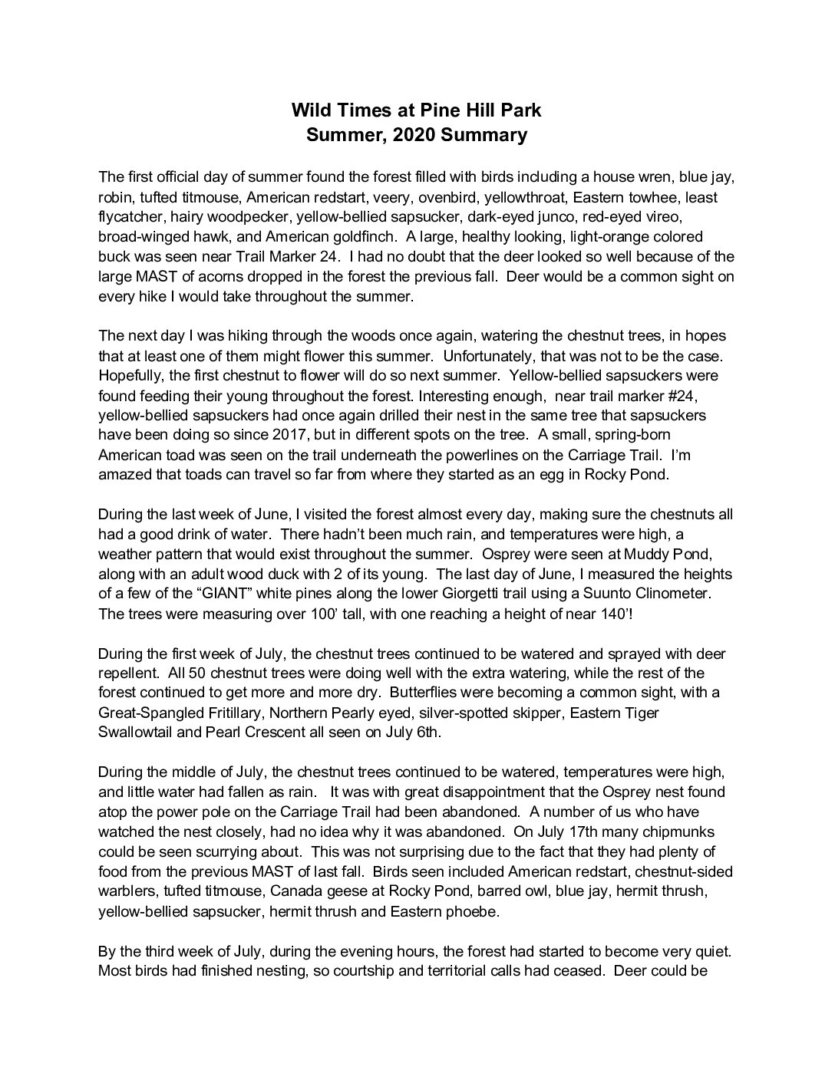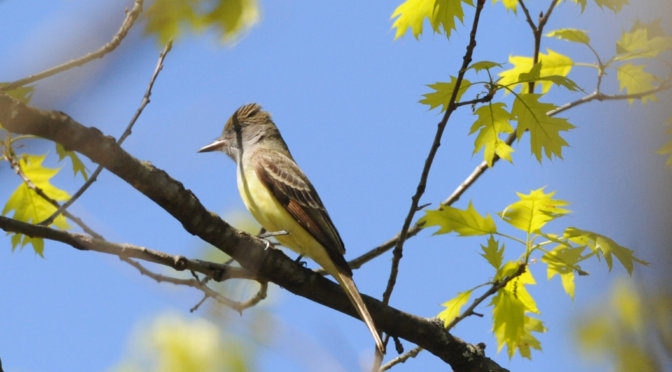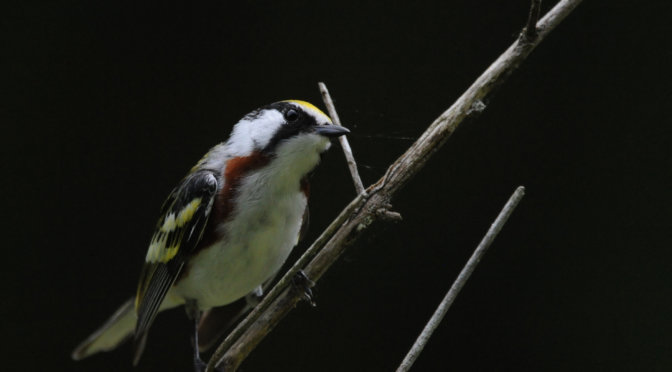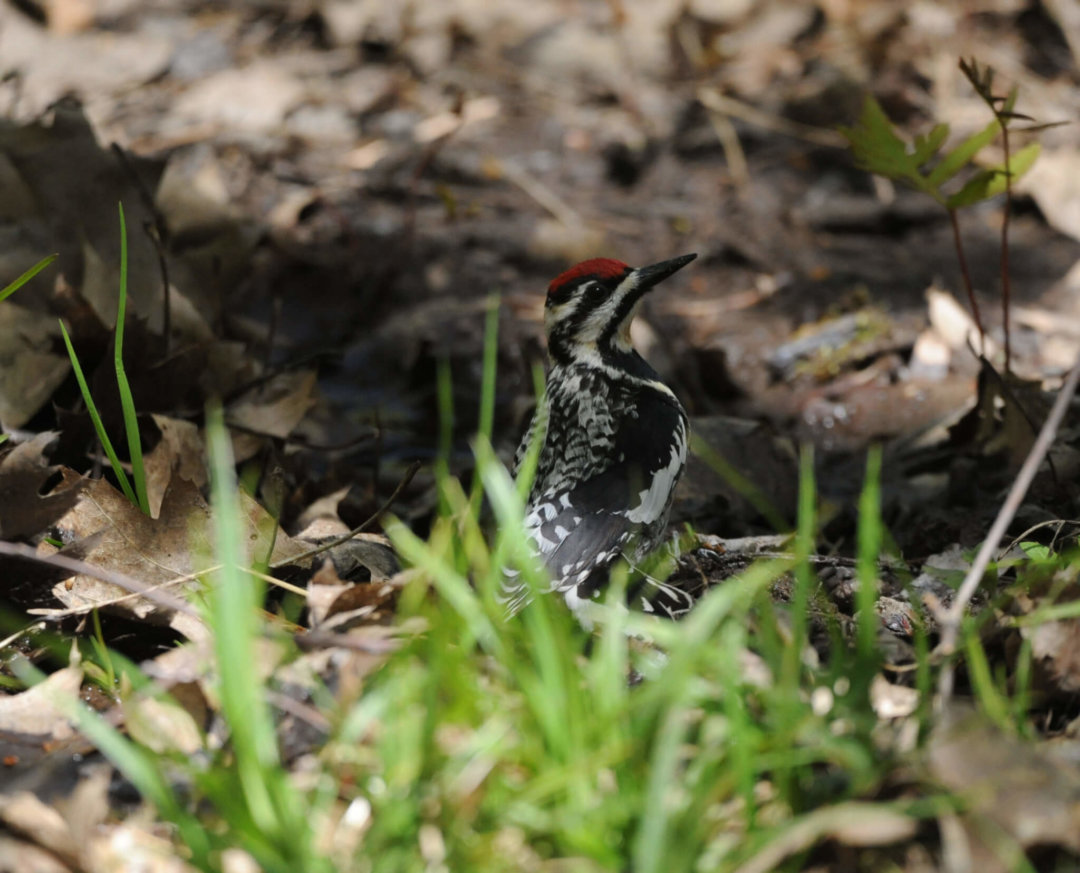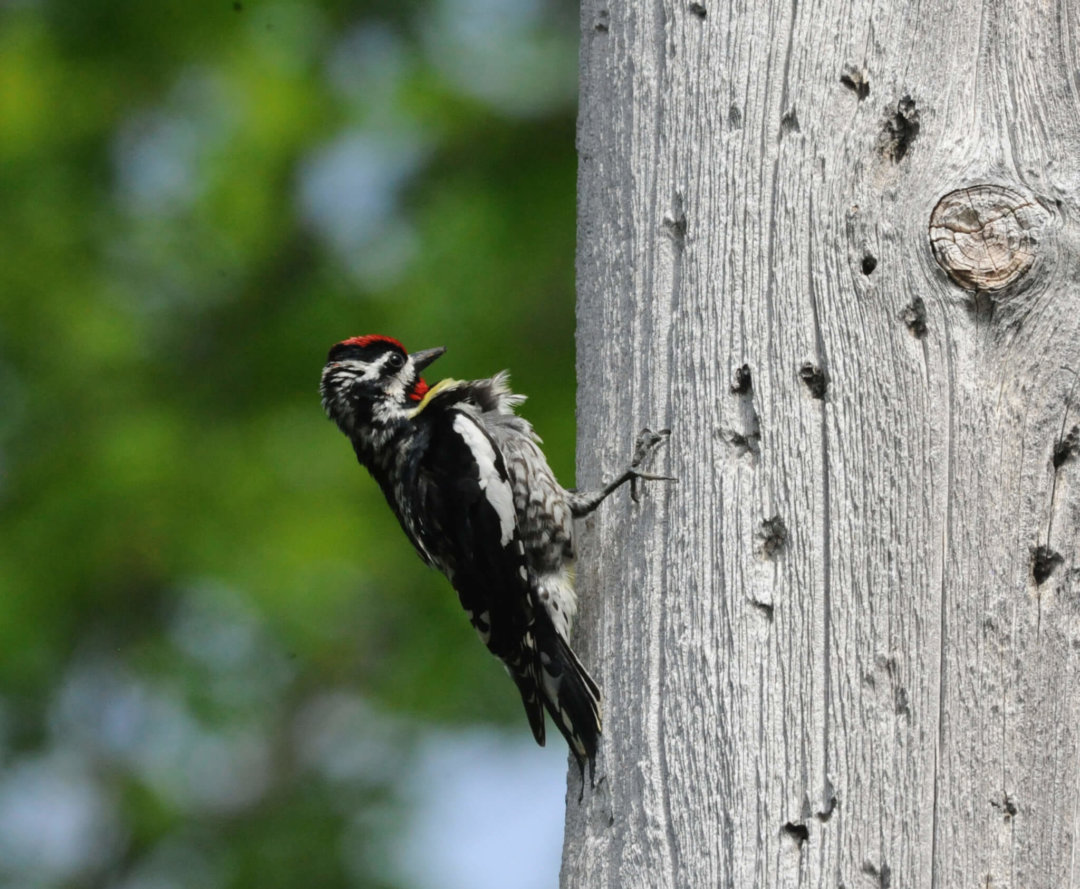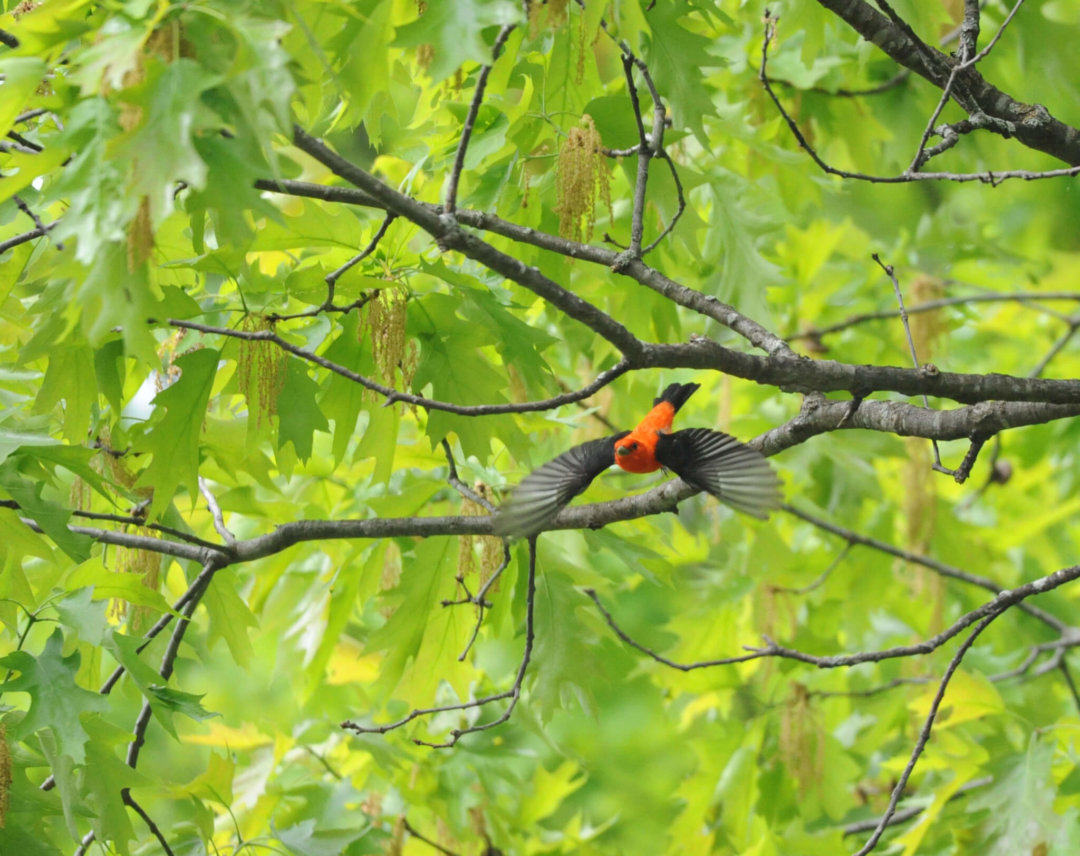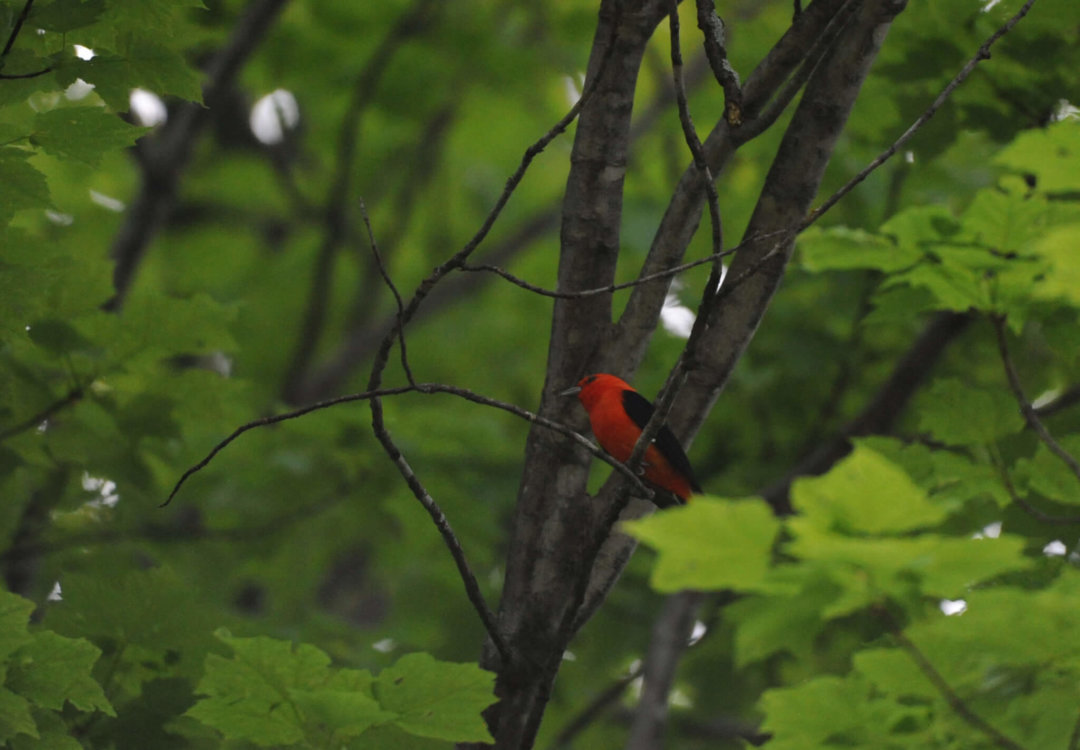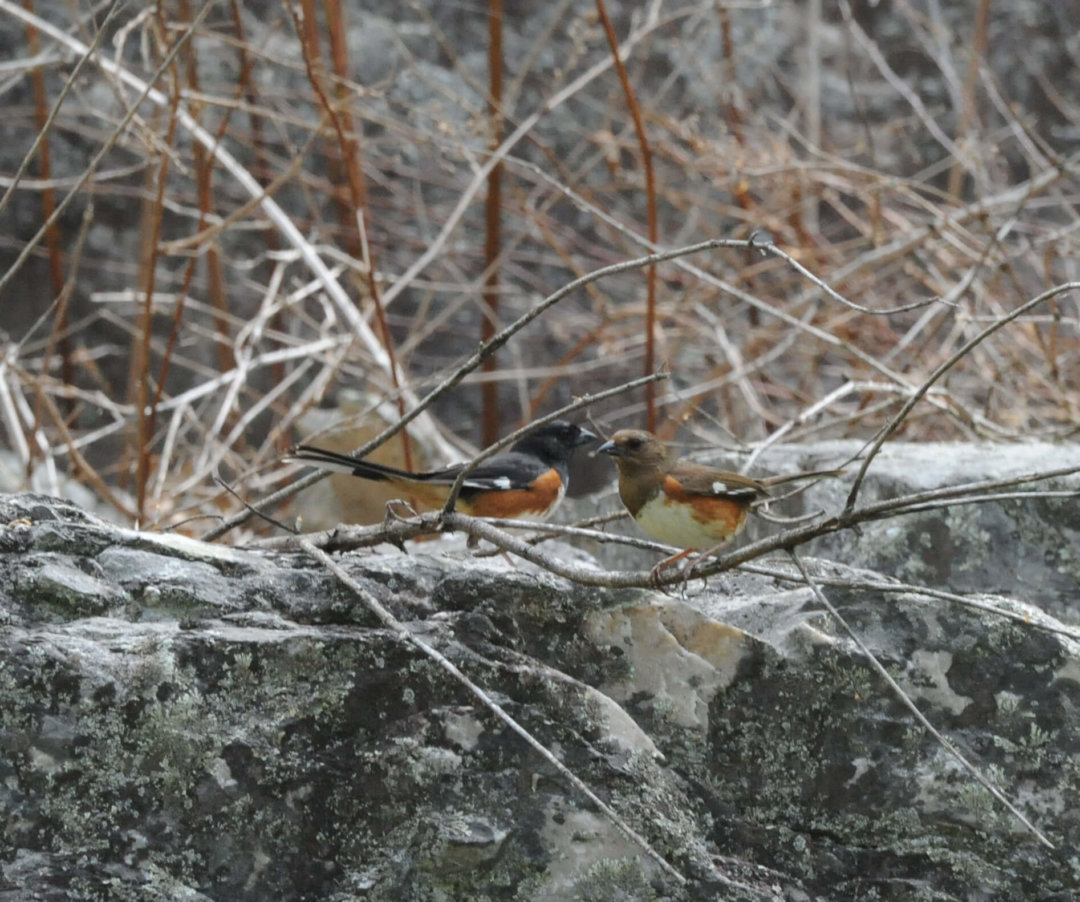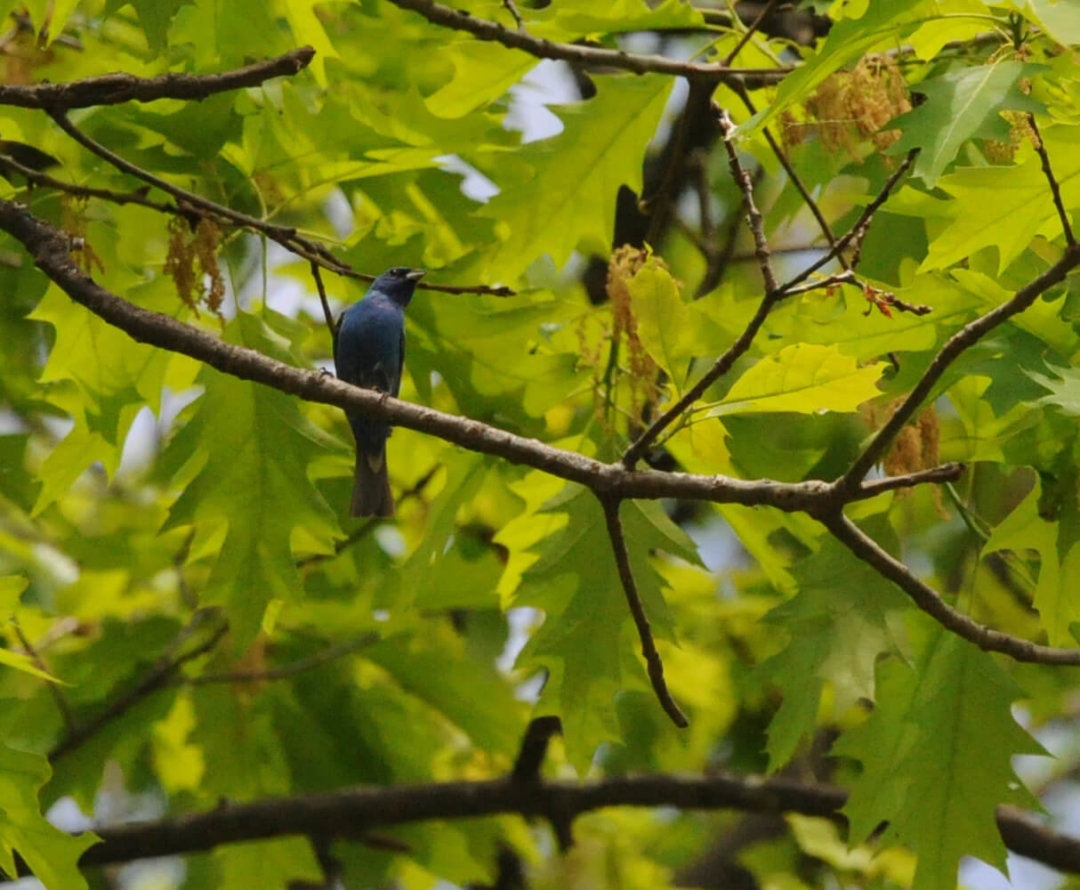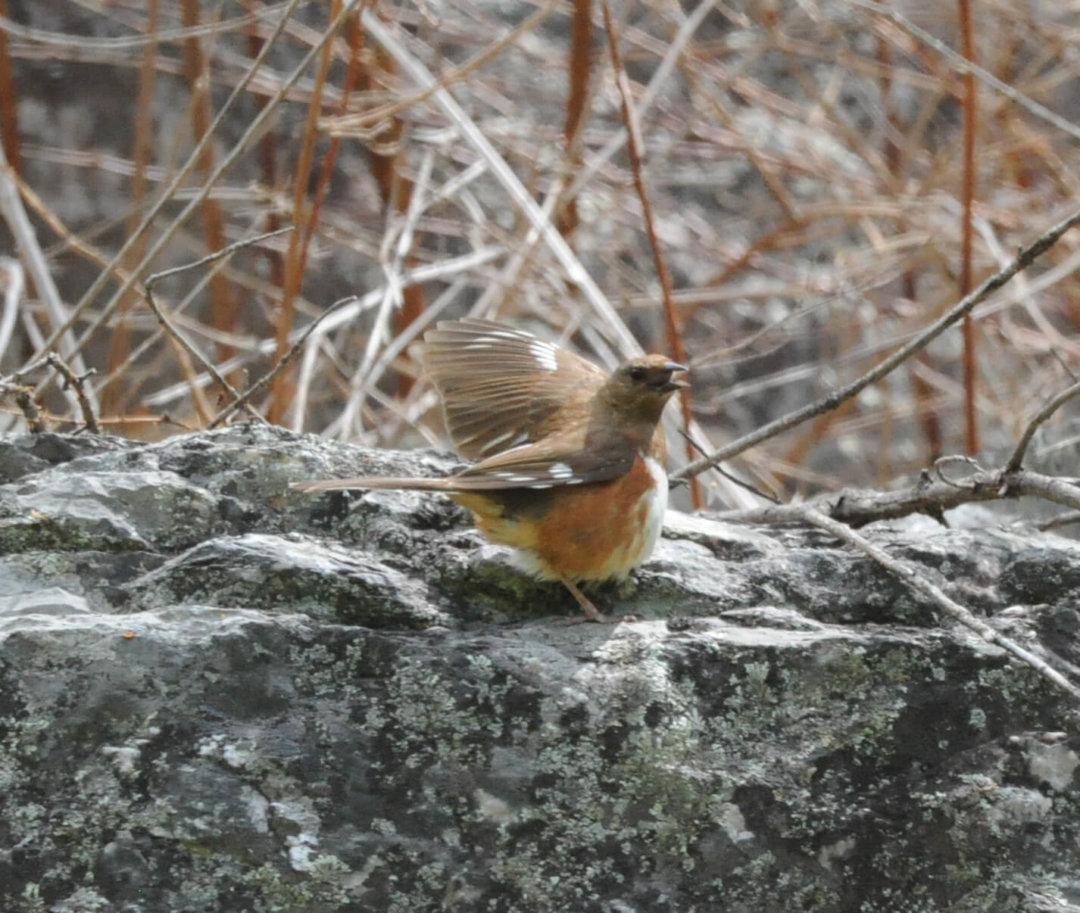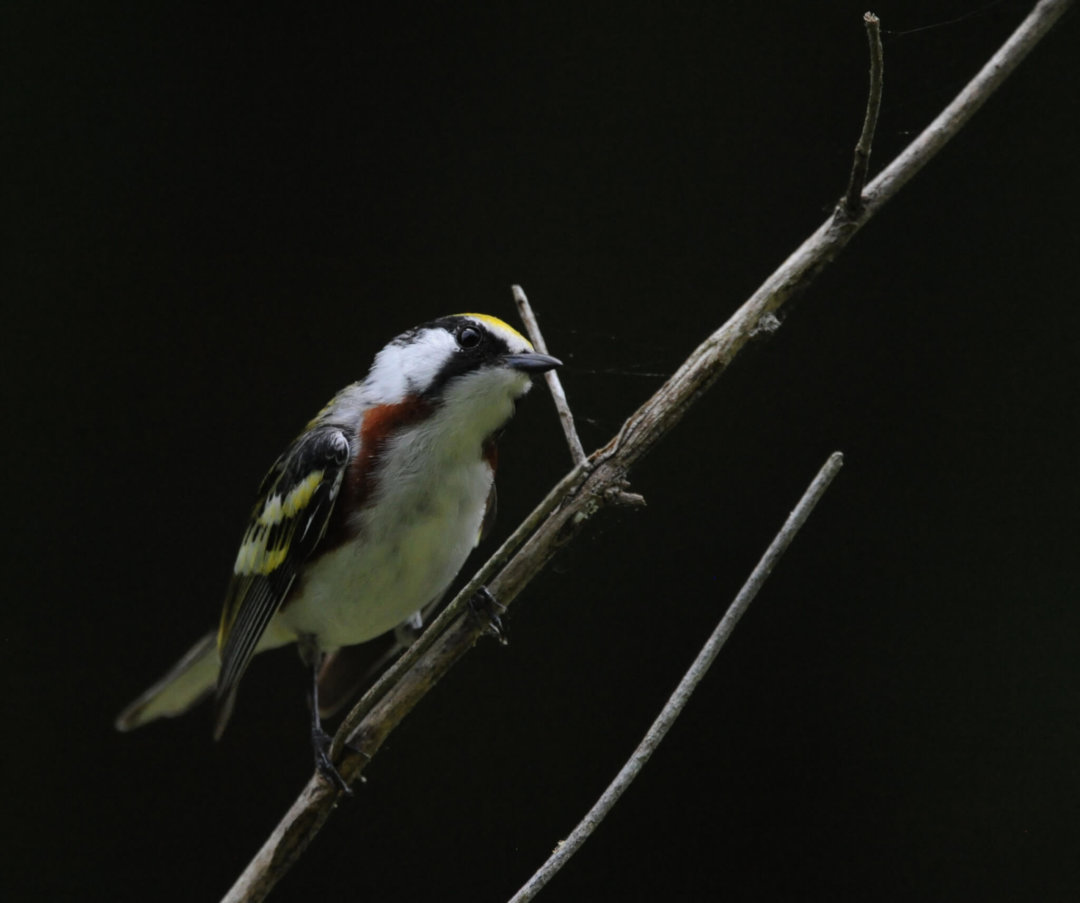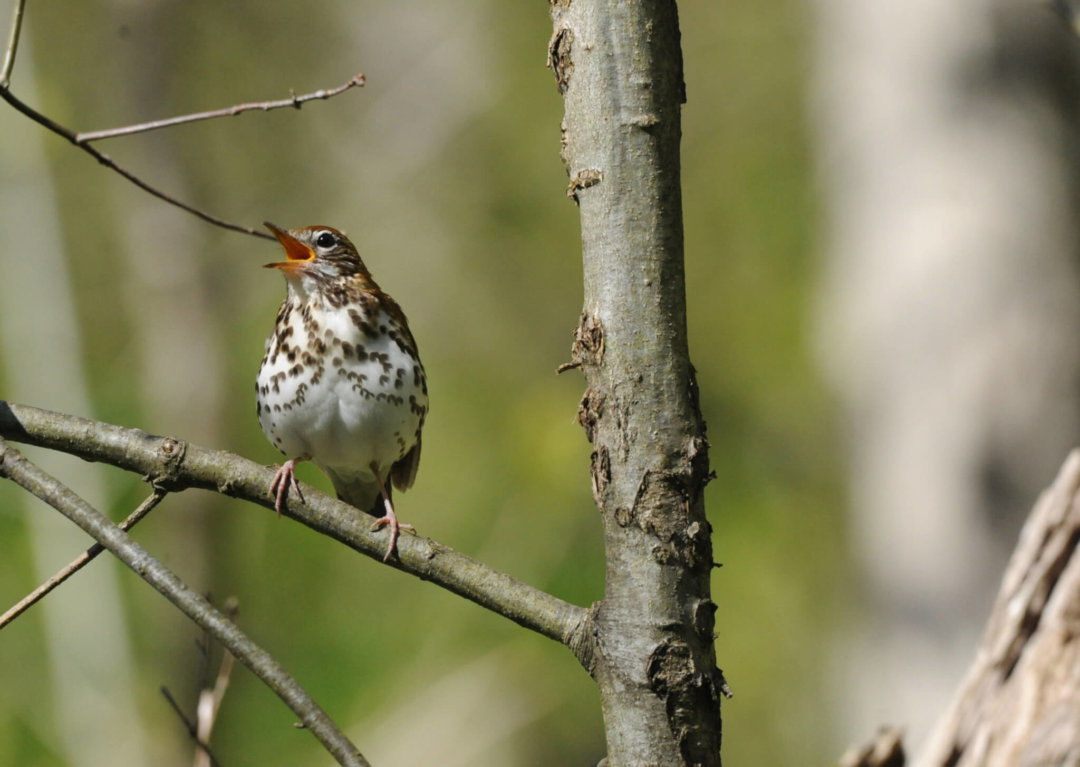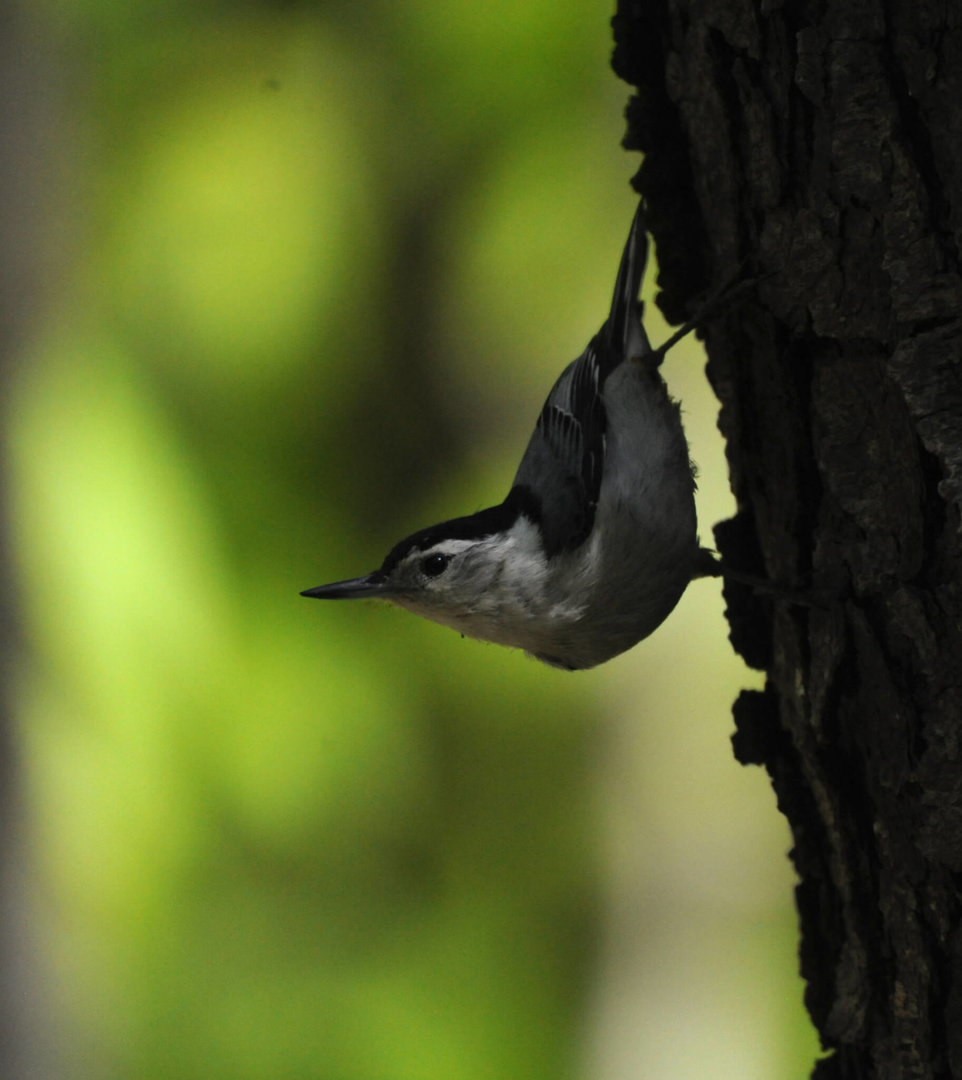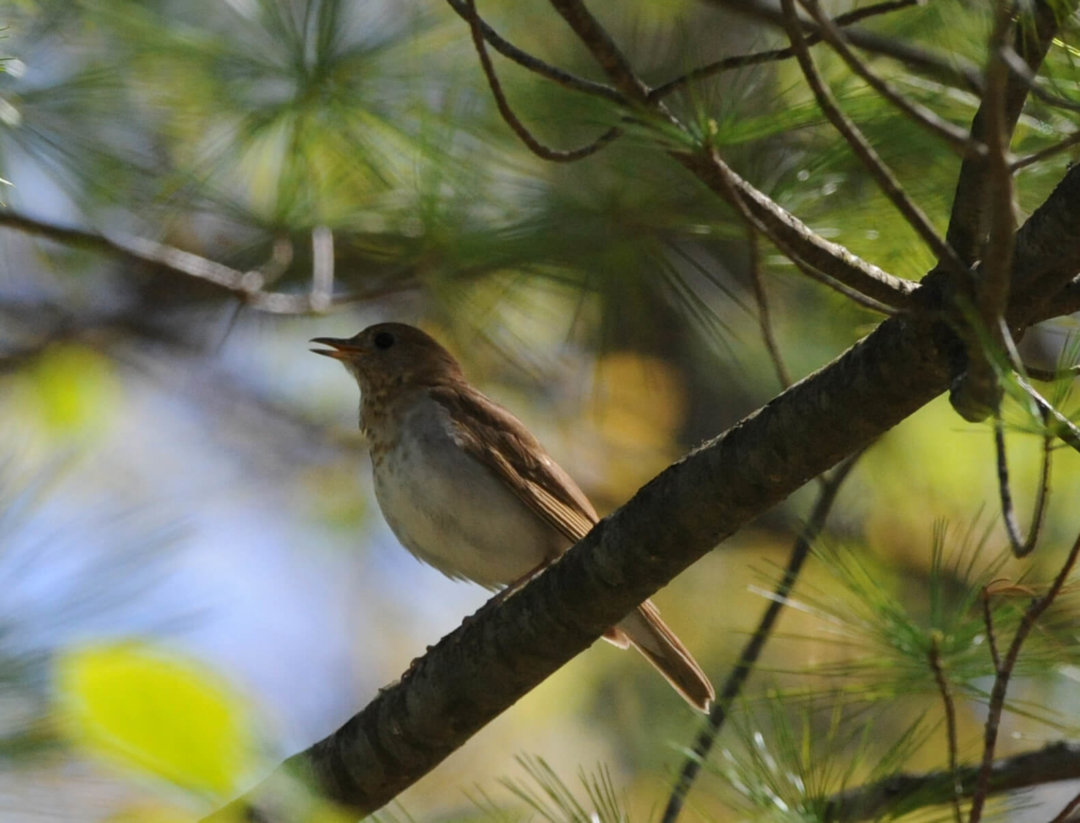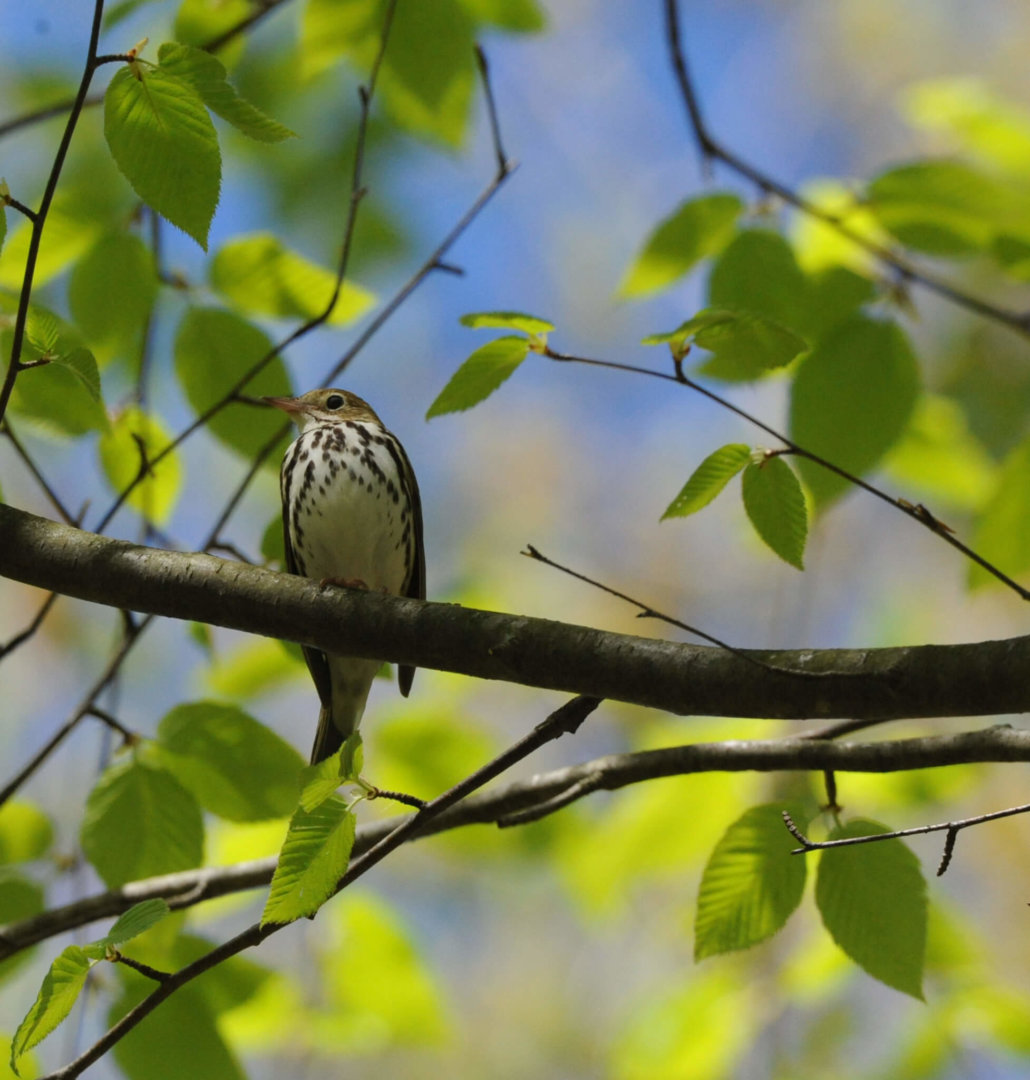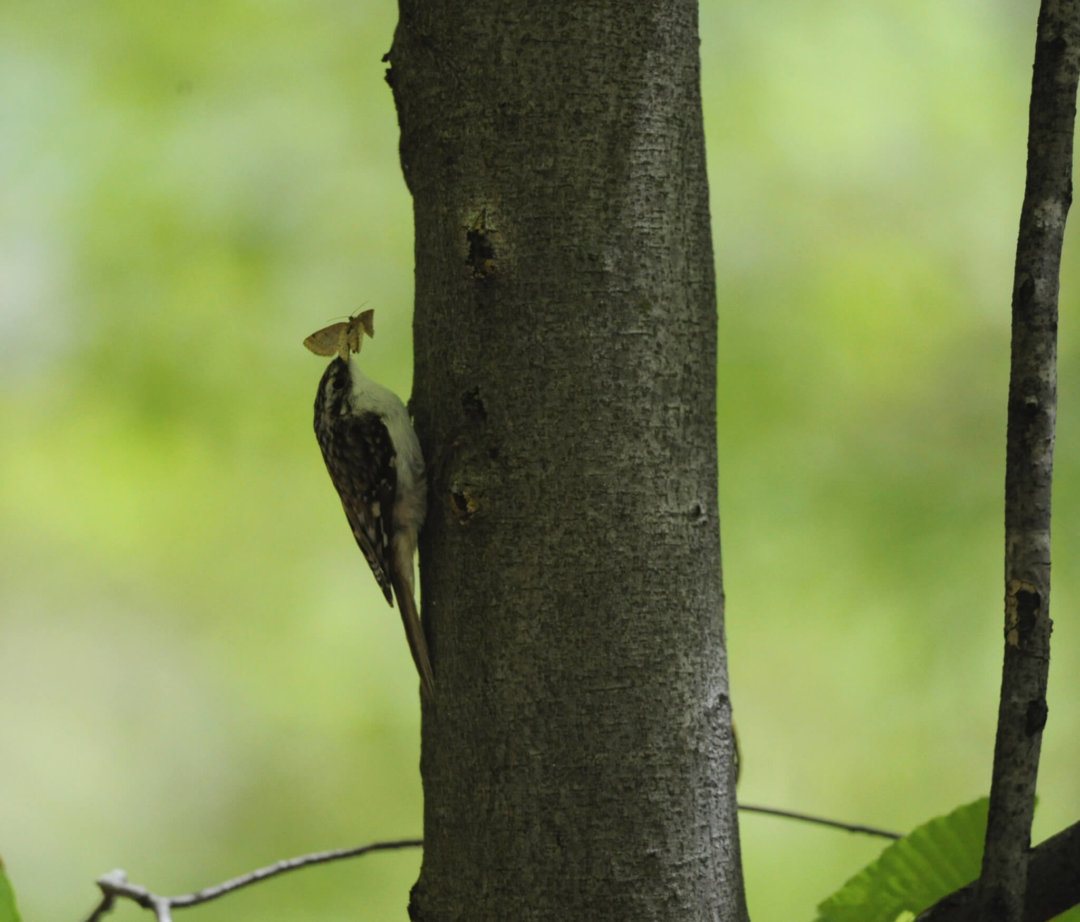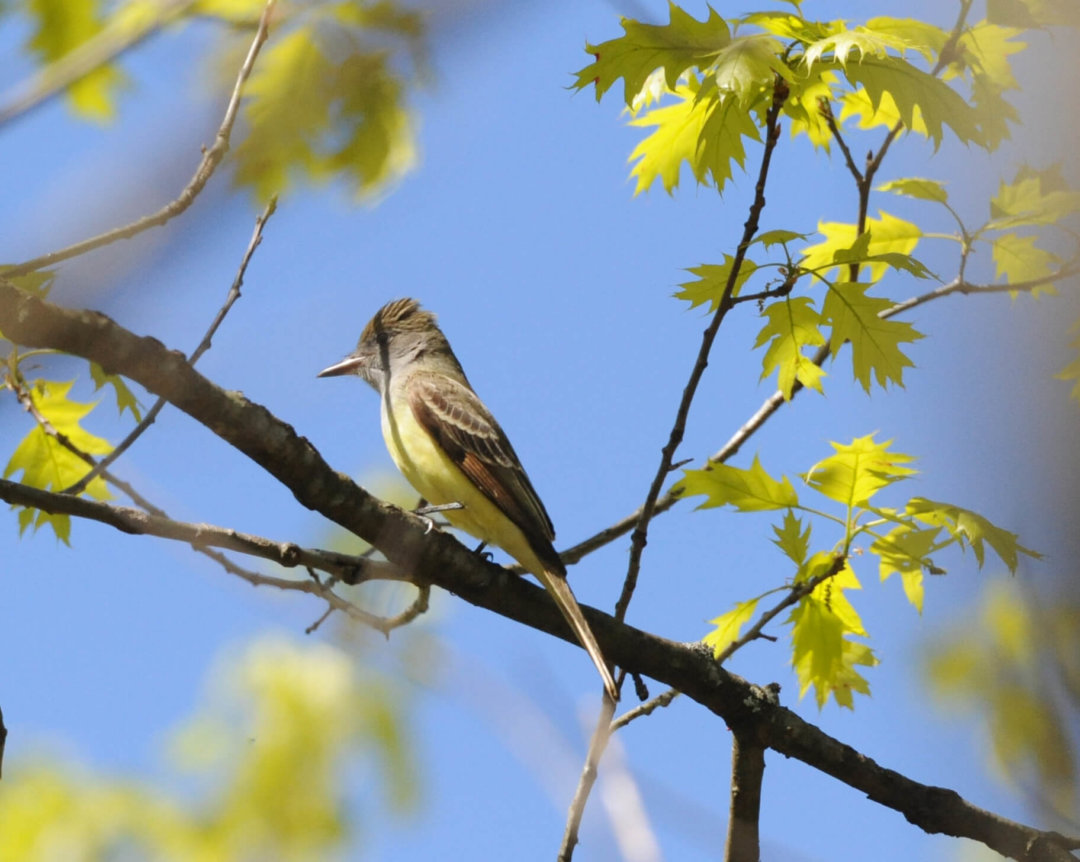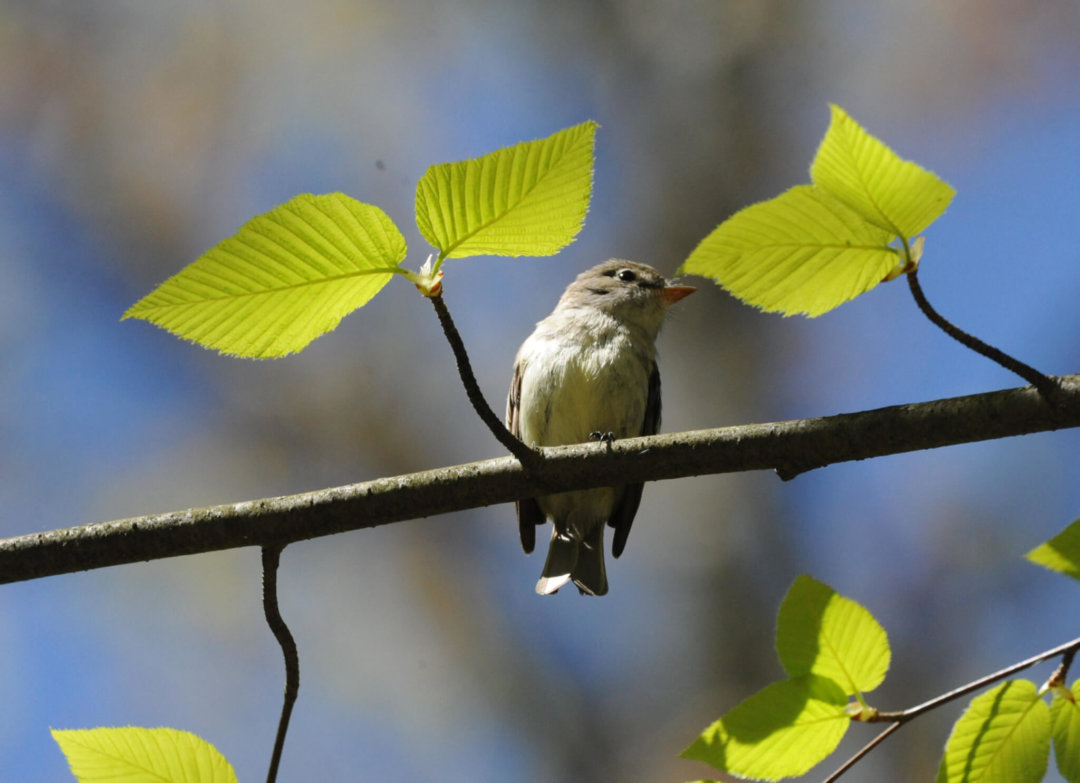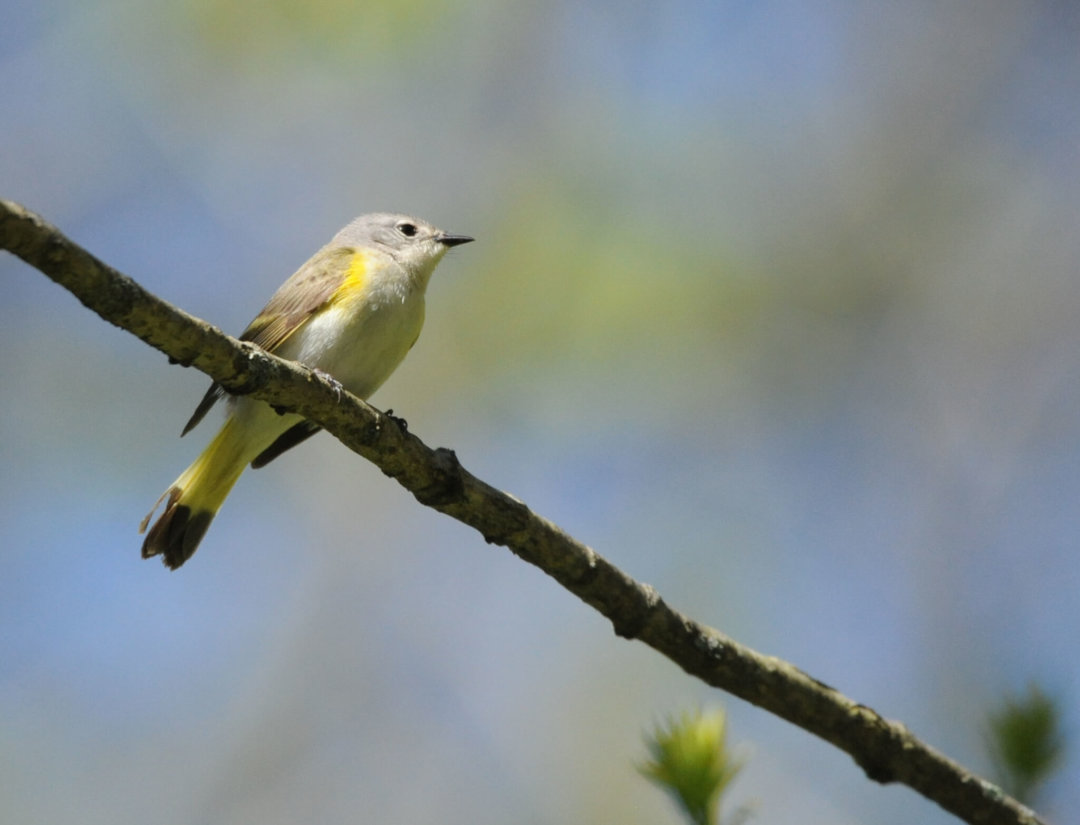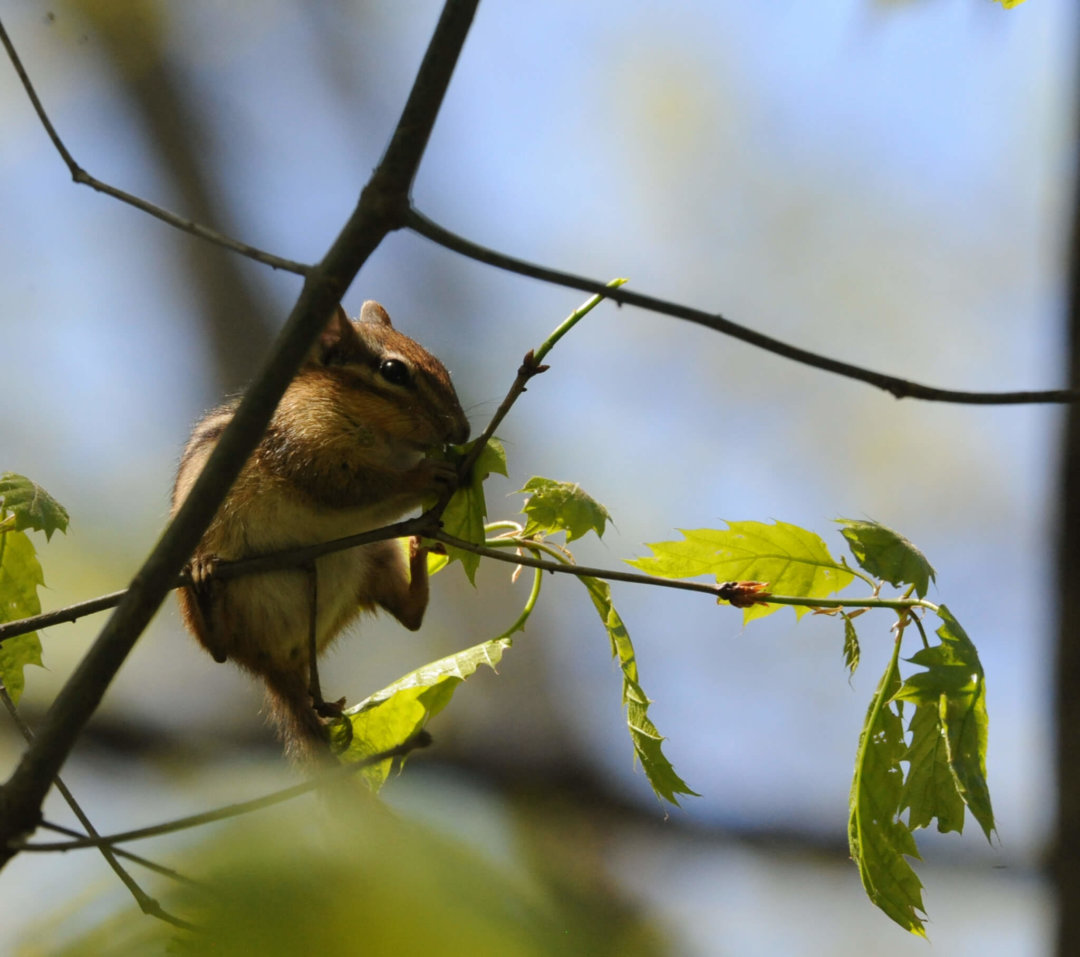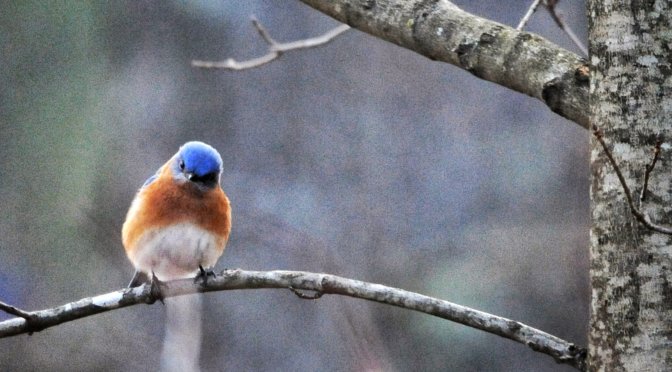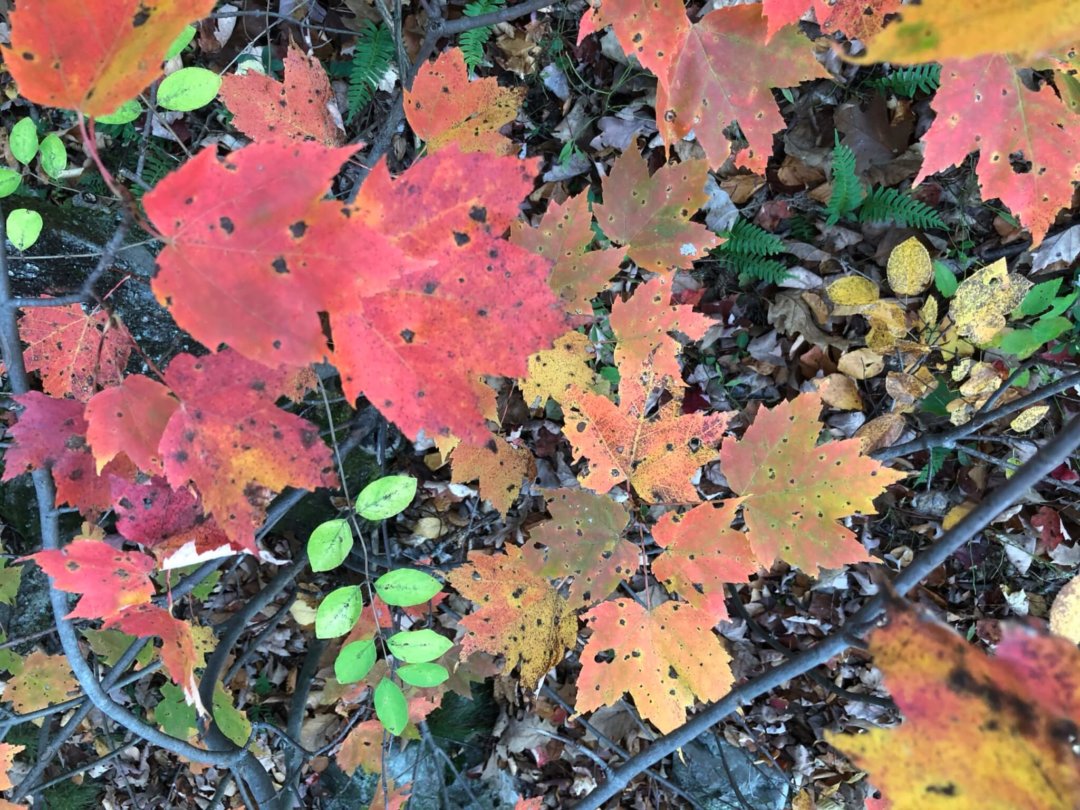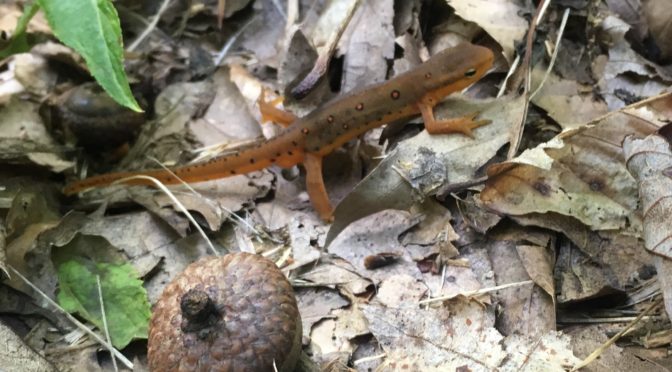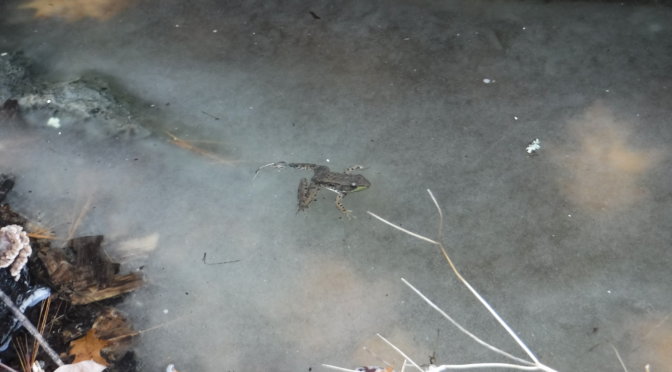By Tom Estill
On a bird walk during the first week of summer I was able to see American redstarts, red-eyed vireos, yellow-throated vireos, pileated woodpecker, Eastern peewee, hermit thrush, ovenbird, veery, great crested flycatcher, and scarlet tanagers singing on Crusher Rd. near the old quarry, where I hear them every summer at that same spot. Wood thrushes were also heard near the trailhead. Though I can hear hermit thrushes throughout the park for most of the summer, wood thrushes tend to be heard sparsely, and mostly near the trailhead area.
On July 1st, I planted milkweed seedlings, as I do every year, in the area where the old beach used to be during the early 1950s at Rocky Pond. The area has been designated a Monarch butterfly Waystation and provides migrating Monarch butterflies with food, and a place to lay their eggs as they migrate southward.
On that same day, I planted some two dozen Buttonbush seedlings along the shores of Rocky Pond as part of a project to attract more waterfowl to that pond. Buttonbush is an impressive-looking flower that produces a prodigious amount of seeds that waterfowl feed upon.
Also on this day, I noticed that an extraordinary number of young Eastern chipmunks were scurrying about the forest floor. I’m guessing that it was the second litter I was seeing.
During a July 4th walk, I was able to see crows, hermit thrushes, red-eyed vireos, veery, Eastern peewee, American goldfinch, broadwing hawks, ovenbird, blue jay, hairy woodpecker, yellow-bellied sapsucker, osprey sitting on their nest at Muddy Pond, and Eastern phoebe. The infestation of gypsy moths had tapered off, red efts and mushrooms were seen in big numbers due to recent rains, and many plants were in flower including forget-me-not, common mullein, ox-eye daisy, common fleabane, cow vetch, yarrow, common St. John’s-wort, hop clover, common milkweed, red clover, tick trefoil, heal-all, poke milkweed, whorled loosestrife, black-eyed Susan, rough-fruited cinquefoil, and ladies tresses. White admiral and Great Spangled Fritillary butterflies were also seen.
During a mid-July walk, I observed an Eastern chipmunk being chased off a tree by an Eastern kingbird. Though I did not see a kingbird nest, I have no doubt there was one nearby. Purple loosestrife was in bloom at Rocky Pond, and the American chestnut tree on Svelte Tiger had male catkins in flower. Female gypsy moths were found on many trees laying eggs, with many males flying about looking for females to mate with. I was happy to see Eastern phoebes and Eastern kingbirds catching male gypsy moths “on the fly” then devouring them.
Using my bird call “app”, I was able to call in a scarlet tanager and have it land on a branch just a few feet away from me. What a magical moment. Along the south shore of Rocky Pond, I was able to see a cedar waxwing and ruby-throated hummingbird fly in and out of their nests. It’s amazing how small the hummingbird nest is in size. Also saw a hummingbird clearwing moth feeding on the nectar of milkweed flowers. Its size and flying behavior cause it to sometimes be mistaken for a hummingbird.
On July 16th, I was treated to the sight of two young barred owls perching on the limbs of a white pine tree, near trail marker #16. One of the birds allowed me to approach within just a few feet. I kept looking for the mother nearby, but she was nowhere in sight. Another magical moment.
On the way back to the trailhead, I came across a most beautiful white-tailed deer doe. White sweet clover, Queen Anne’s Lace, cow-wheat and common agrimony all in flower. The Common Wood nymph and northern crescent butterflies were flying about.
A week later, I came across young barred owls once again in the same area. But this time, there were 3 young owls! For years, I’ve been hearing barred owls “hooting” in that area, but have never found their nest. Maybe next year?
During the last week of July, I took a hike up to Muddy Pond to take a closer look at the Osprey nest. One adult was on the nest, at least one young was in the nest, and another osprey adult perched in a nearby tree. It would be the first and last time I saw any signs of the young osprey, though I heard reports from others that 3 ospreys could occasionally be seen at Muddy Pond in late summer. On the walk back, I saw an Eastern garter snake and young pickerel frog near Rocky Pond.
On an evening hike during the first week of August, I noticed a couple of interesting things. First of all, the forest was relatively quiet, and secondly, I didn’t see a single male gypsy moth flying about. Our local birds were having a feast there for a few weeks. The ruby-throated hummingbird was no longer sitting on its nest, and both bullfrogs and green frogs could be heard “croaking” at Rocky Pond.
By mid-August, chipmunks and squirrels were busy collecting acorns, blackberry shrubs were in fruit, and Eastern towhees were singing in the same area they are always found underneath the power lines on the Carriage Trail as you head up to Rocky Pond.
On Aug. 21st, I, and members of the Rutland Co. Audubon Society, had the privilege of going on a fern walk with Emeritus Professor of Biology at St. Michael’s College, Peter Hope. We saw lady fern, ostrich fern, sensitive fern, intermediate wood fern, cinnamon fern, Christmas fern, hay-scented fern, New York fern, maidenhair fern, marginal wood fern, bracken fern, and interrupted fern. VT has a little over 60 fern species, and many can be found at Pine Hill Park.
During the last week of August, I saw white lettuce, whorled wood aster and the beautiful dark-blue colored bottle gentian, all in flower.
The forest during the first week of September was very quiet. Just a few birds were seen on an evening walk, including the white-breasted nuthatch, hairy woodpecker, and a great blue heron at Muddy Pond.
On a Sept. 6th walk, I was treated to the sight of a majestic Bald Eagle flying over Muddy Pond, a few wood ducks, one osprey, and a great blue heron. Cones were maturing on Eastern Hemlocks, acorns were falling(one fell on my head!), Jack-in-the-pulpit had mature bright red fruits, and silverrod, New England aster, and goldenrod were all in flower.
On Sept. 11th, the forest was once again very quiet. Acorns were still falling, chestnut-sided and black-and-white warblers were migrating through the forest, hooded mergansers were seen at Rocky Pond, and a great blue heron, a few Canada geese, and wood ducks, and three active beaver dens were seen at Muddy Pond. A few trees were starting to show fall colors.
On Sept. 16th, many robins were seen migrating through the forest, chipmunks and squirrels were busy collecting acorns, and a Northern flicker was seen.
That’s it for this issue, please enjoy your walks at Pine Hill Park, and remember to stay on the trails.

